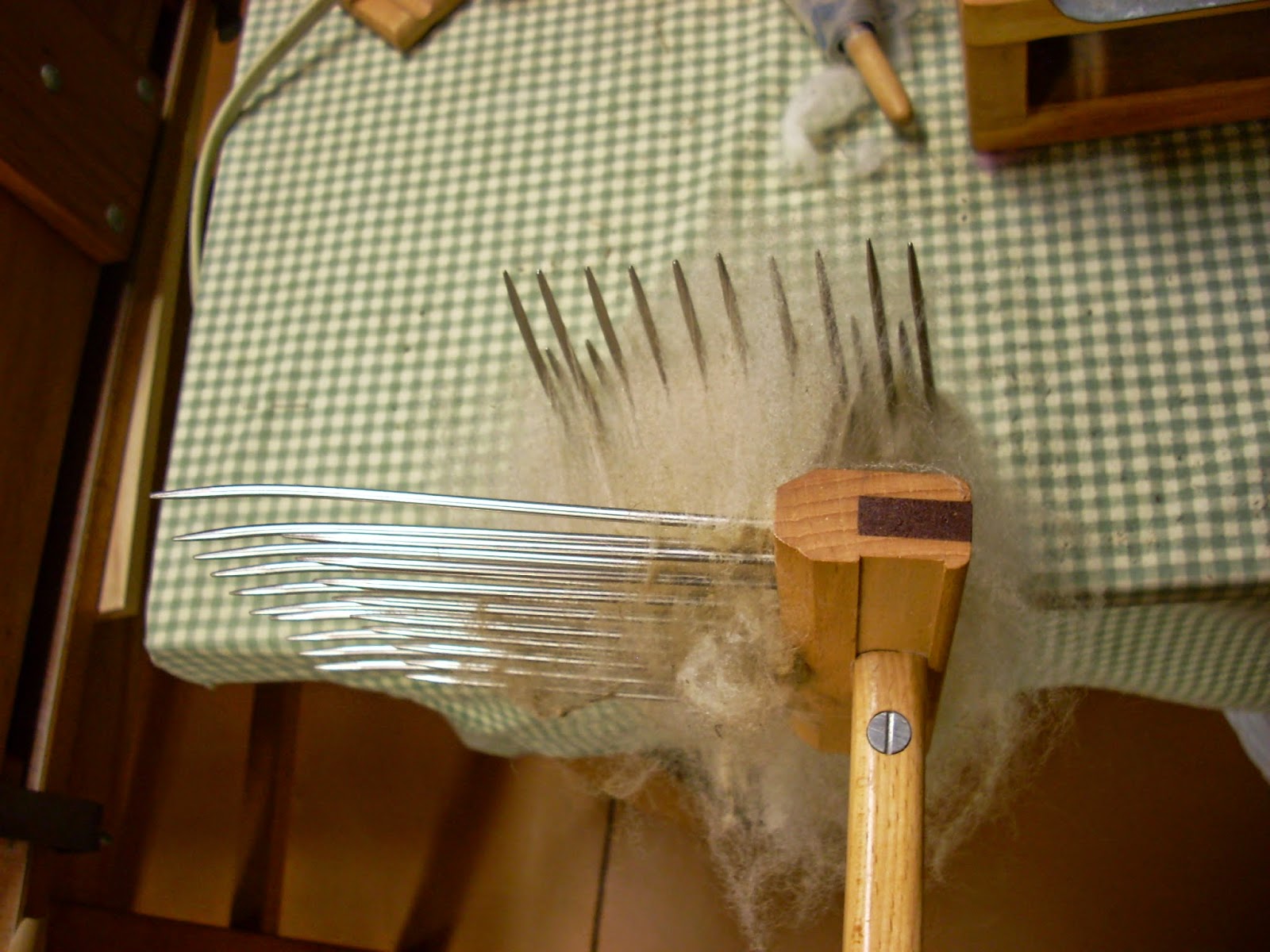 Annual Mother-Child Farm Sleepover
May 17th - May 18th at
A Wrinkle in Thyme Farm,
Sumner, Maine
Please consider joining us for this unique and relaxing
getaway.
Mothers and children will have opportunity to:
We will meet at 9:30 on Saturday
and leave after brunch on Sunday
Kripalu Yoga taught by Wendy
Youmans, KYT
Creative Kids Yoga and Hoopnotica Hoopdance taught
By Jen Appleby
Register NOW! $150
per mom, $50 per child
To
register print registration form on website and send it with a check to
106 Black Mtn Rd, Sumner ME 04292
or
contact A Wrinkle in Thyme Farm at
info@awrinkleinthymefarm.com or call 207-212-4058. |
Monday, April 28, 2014
Mother/Child Farm Sleepover 2014
Sunday, April 27, 2014
Spinning in the Grease
Renee
here. As you may know, I learned to spin
wool this winter, and I’ve had great fun experimenting. I recently became interested in the
properties of raw wool, specifically, greasy mittens that would be
water-resistant, more so than their washed-wool counterparts. Even on the coldest days this winter, I could
bury my hand in the snow-covered fleece on a sheep’s back and find a warm, dry
critter beneath it. The same could not
always be said for my snowy mittens and hands inside of them.
In
order to spin in the grease, I learned you need a freshly-shorn fleece, before
the lanolin has time to get sticky. I
selected Cinderella’s lamb fleece from our last shearing, in part because she
had nice long fibers (easier to spin), in part because she was very greasy
(that’s the point, right?), and in part because she’s a favorite.
 |
| Cinderella in her fleecy snowy glory |
It
seems the greatest deterrent to spinning in the grease is the fear that one’s
equipment will be ruined by it. This
leads some to believe they should have separate equipment for spinning in the
grease. Obviously, the mechanized carder
we usually use to process washed wool would not do will with greasy, dirty
fiber. I opted for the combs. Youtube led us to believe this is more
processing than is necessary to spin raw wool, but the appeal of the combs was
that they were handy, and looked relatively simple to clean and difficult to
damage.
 |
| Getting ready to comb |
From
my Youtube research, I gathered that there is no one right way to use the
combs, but gained some helpful hints on not smashing the wool together in a
clump or spearing yourself.
I
then set about combing Cinderella’s fleece.
I picked out only the largest pieces of vegetation, letting the combs do
the rest. As I combed it, the short
fiber remained behind, set aside for felting, and the vegetation fell through
to the floor.
 |
| Here we go |
From
the comb, I used a nifty trick to make roving: pull. Amazes me every time.
 |
| whoa, magic |
Each
time, I got a little ball of roving.
When
they piled up, I took a break and spun them.
The voices of the internet claim spinning in the grease is easier,
smoother, and more enjoyable. They are
correct. Cinderella spun up rapidly,
evenly, and painlessly. Stay tuned for
what happens next!
Subscribe to:
Comments (Atom)


